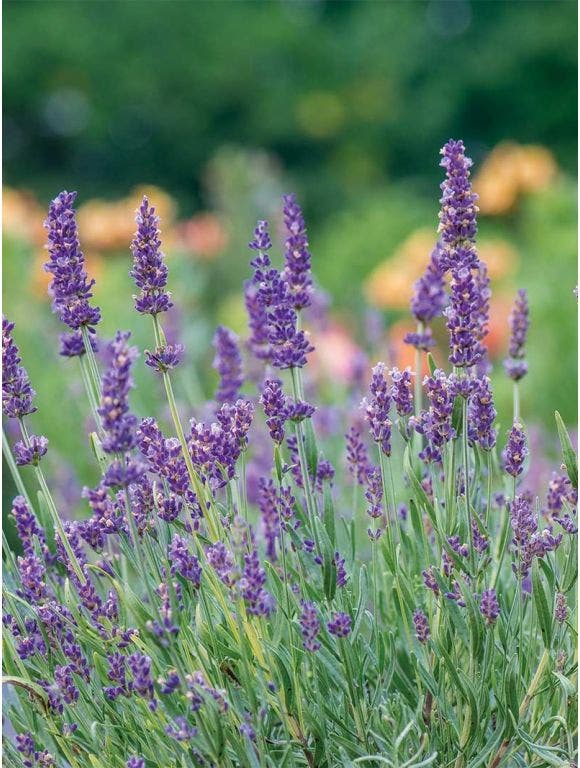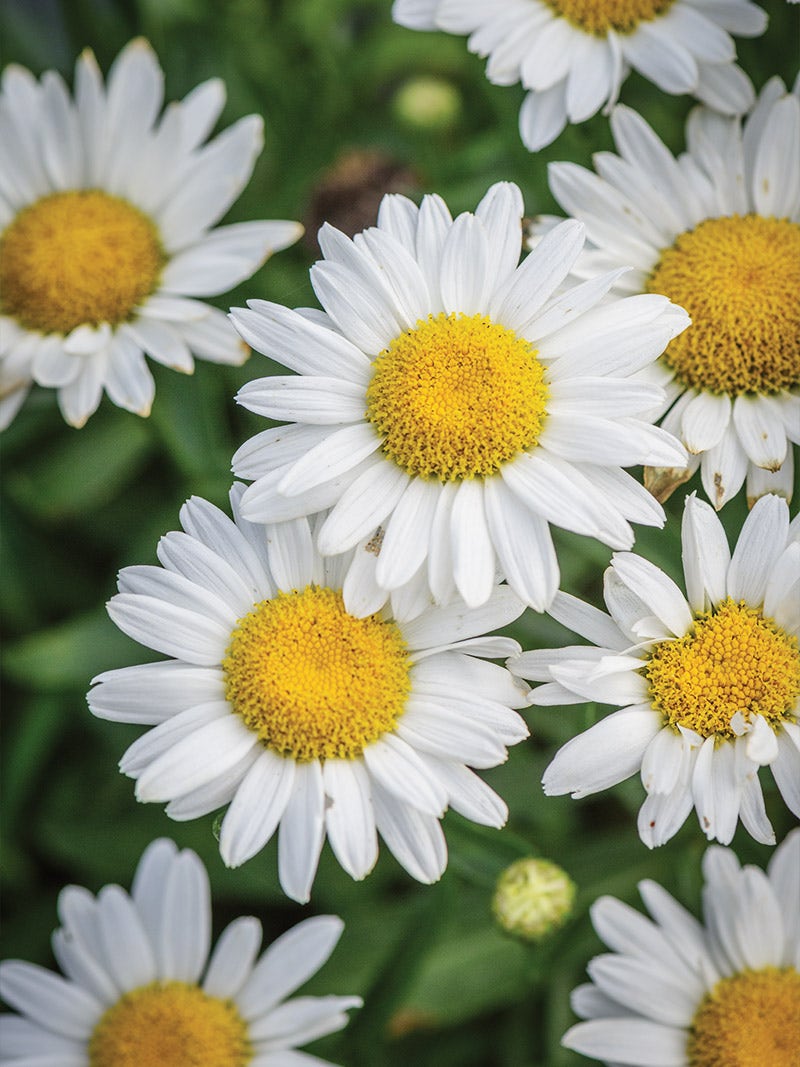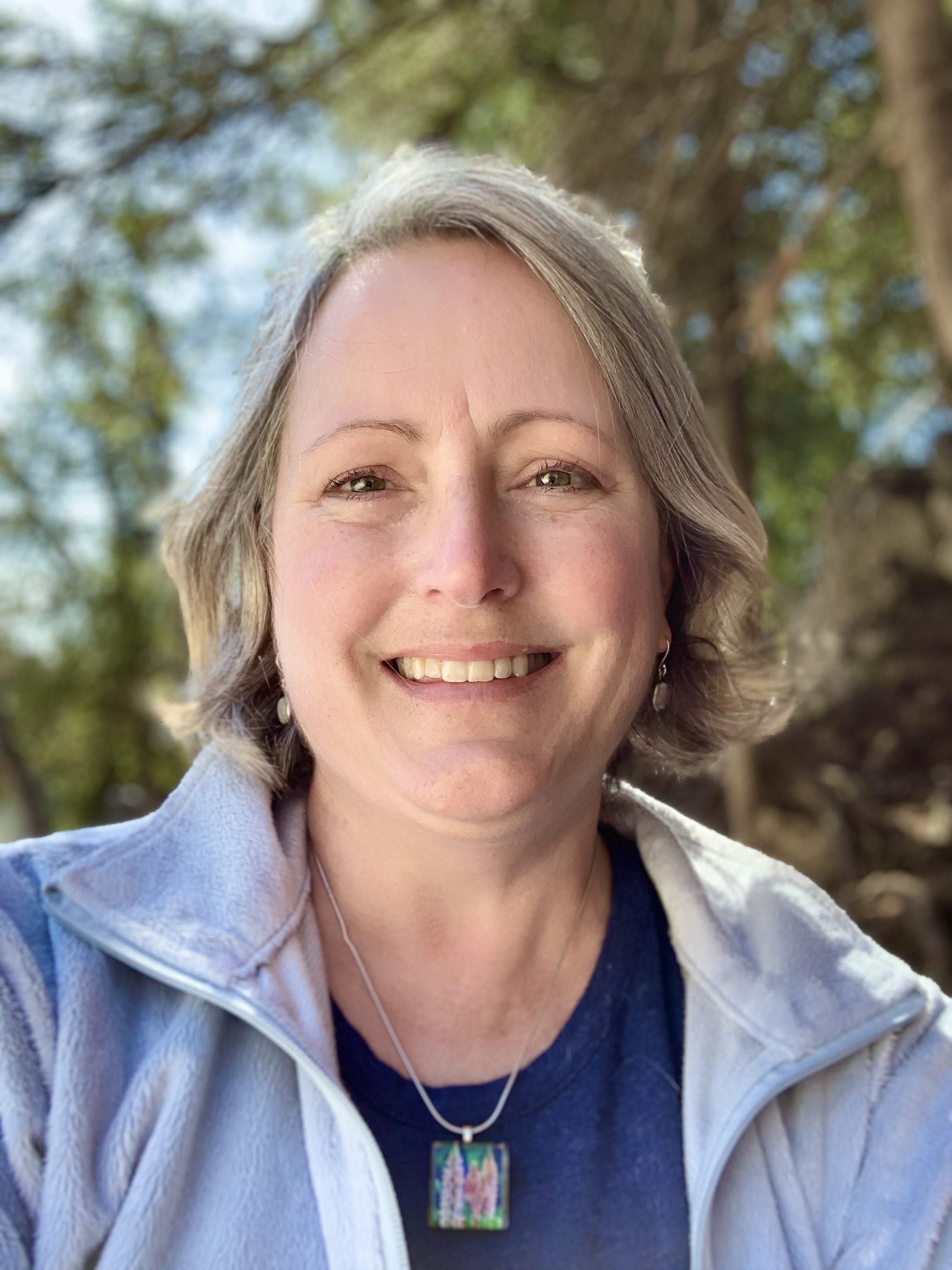


With flower clusters shooting from mounded gray-green foliage like purple fireworks, lavender can be one of the most fragrant, beloved and useful plants for your garden. You can mix and match different types of lavender for calming herbal creations, or choose drought-tolerant lavender companion plants for show-stopping, sun-loving combinations.
Here's a look at some of the best types of lavender plants for containers, borders, herb and flower gardens, along with lavender companion plant suggestions and the benefits of adding lavender to your garden.
Choosing Your Lavender
Lavender originated in the Mediterranean region, and the plants thrive in conditions that mimic the area's dry, rocky, sandy soil, hot temperatures and full-strength sun. Most lavender can survive year-round outdoors in zones 5 to 9, and these plants will do the best when you fuss the least over them.
When choosing which types of lavender to plant, consider what you want your garden to look like. Are you looking for a vibrant border along a patio? A dramatic corner shrub for a flower garden? Or maybe a petite container clustered with other flowers on a front porch?
Portable Sizes for Cold Zones
If you live in a colder climate (zones 2 to 4), look for petite lavender plants, which can be put into pots and overwintered indoors.
'SuperBlue PPAF' stays about 12 inches tall and blooms from June through September. 'Forever Blue' grows to about 14 inches tall and is great for borders and containers. It blooms earlier than most varieties and may rebloom again.
'Bandera Purple,' an 8- to 10-inch plant with dramatically dark-purple blooms, also has a lighter-purple "flag" tufted above the cluster of flowerets to give it a slightly different appearance.
Classic Fragrant Lavenders
One of the most popular and dependable lavenders, 'Grosso' reaches 30 inches tall with extra-large and fragrant flower spikes. Lavender growers covet this variety for calming potpourri, sachets and decorative dried flowers. The silver-gray foliage creates a pretty border even after the midsummer bloom is done.
'Munstead' lavender ranks as another classic choice for its aromatic flowers. This herb garden favorite can be used in baking and cooking and to make oils, simple syrups and soaps.
Blending Lavenders
'Phenomenal' offers an extra-hardy choice among the types of lavender. It can handle heat and humidity and repel deer while shooting up deep violet-blue flower spikes on 24-inch plants.
For a fragrant and eye-catching lavender border, blend plants such as the violet blooms of 'Phenomenal' with the delicate flowers of 'Lacy Frills' lavender, which features white blooms. You can alternate these varieties along a border, or plant the shorter 'Lacy Frills' in front of 'Phenomenal,' 'Grosso' or another larger purple lavender to create levels in the garden. 'Bandera Purple' also creates a nice contrast when planted in front of larger lavenders.
Planting a variety of lavenders can also help extend the time you'll have lavender in bloom as each one can have a slightly different bloom time from mid-to-late June through late July or early August.
Lavender Benefits
In addition to its colorful blooms, lavender's other benefits can help your garden thrive.
Natural Deer Deterrent
Fragrant lavender of any kind can deter marauding deer, making this plant a worthy border for a vegetable or herb garden.
Lavender pairs beautifully with other Mediterranean herbs, such as oregano, rosemary, thyme and sage, which can handle the heat and drier, better-drained soil.
If you want lavender's scent to help shield plants such as tomatoes, lettuce and beans — all of which will need regular watering — you can plant your lavender in pots or raised beds around your vegetables. When you water the garden plants, avoid watering the lavender, which prefers to stay dry.
Lavender Draws Pollinators
When lavender reaches peak bloom, the mounds of flowers can literally buzz with activity as they draw pollinators. Having more pollinators helps keep every garden healthy, especially when growing vegetables and fruits.


Lavender Companions
If you're looking for lavender companion plants, look for flowers that contrast well against lavender's many variations of purple. They also need to grow well in full sun (at least eight hours per day) with minimal watering. These lavender companion plants can be great for gardens in drier parts of the country and areas prone to watering restrictions.
Here's a sampling of flowering plants that match well with different types of lavender.
Echinacea
Echinacea (aka coneflower) is a hearty native flower with rosy purple or white petals with orange-tipped cones that looks lovely blended with lavender. You can dial up the contrast of color even more by planting an ever-widening rainbow of echinacea hybrids as lavender companion plants. Echinacea flowers come in reds, zippy oranges and vibrant yellows in a combination of single or double petals.
Gaillardia
Gaillardia (aka blanket flower) is a drought-hardy favorite that blooms with fiery red petals edged with golden yellow, adding a dramatic pop of color.
Poppies
With papery petals in eye-popping colors, you can plant annual poppies such as California and corn poppies or perennial poppies such as Oriental varieties for a vibrant contrast with lavender's lacey spikes, no matter which types of lavender plants you prefer.
Daisies
Artists will remind you that purple and yellow are complementary colors on the color wheel, and that contrasting technique also works in your garden. The sunny yellows of the 'Gloriosa Double Gold' daisy will blaze against a backdrop of purple lavender. Classic white shasta daisy or painted daisy also blends well with lavender.
For more perennials that thrive in full sun, check out the Burpee catalog.



